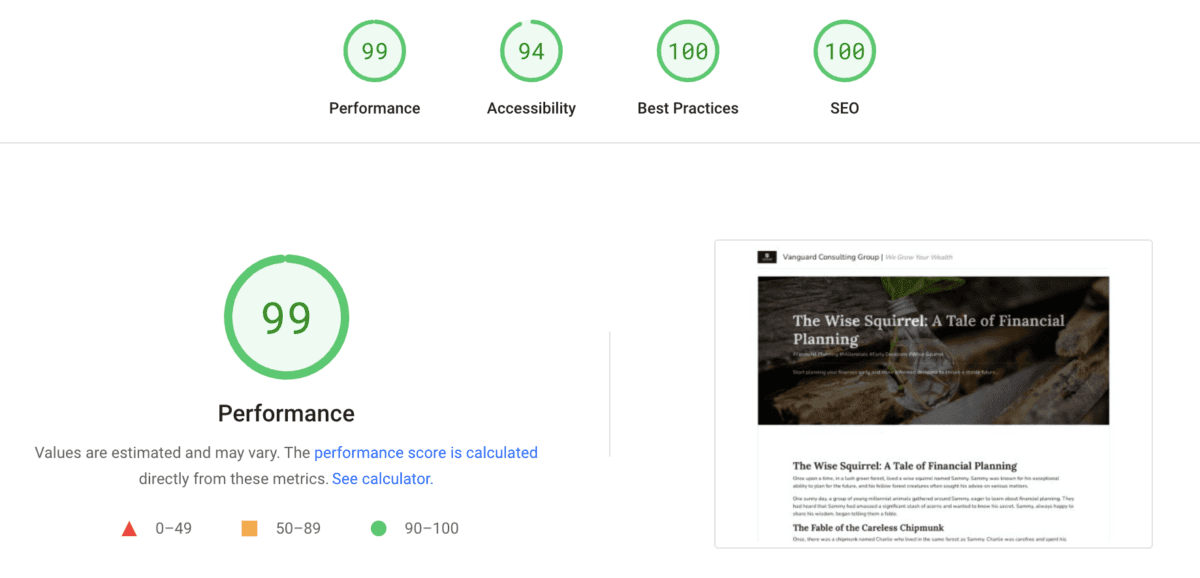
In the fast-paced digital arena, the significance of page speed in content marketing for SEO is undeniable. Media Monk recognizes that the efficiency with which a website loads its content is crucial not only for retaining user attention but also for enhancing its SEO performance.
The Intersection of Page Speed and SEO: At the heart of Media Monk’s strategy is the understanding that page speed directly influences SEO rankings. Search engines, particularly Google, prioritize user experience, and a speedy website is a key component of this. Faster loading times lead to a better user experience, reducing bounce rates and encouraging users to stay longer on your site. This is particularly important for content-heavy websites where engagement is driven by articles, listicles, and multimedia content. The quicker this content loads, the more likely users will engage, share, and return, sending positive signals to search engines.
Optimizing Content for Speed: Media Monk’s approach to content marketing for SEO encompasses optimizing not just the content itself but also how it’s delivered. This means striking a balance between high-quality, engaging content and technical efficiency. Images and videos, integral to compelling content, are optimized for fast loading without compromising on quality. Advanced techniques like lazy loading, where content is loaded only when needed, and caching strategies, ensure that repeat visitors experience faster load times.
Mobile-First and Speed: With the shift towards mobile browsing, Media Monk emphasizes a mobile-first approach in content marketing. This strategy acknowledges that page speed is even more critical on mobile devices, where slower loading times can significantly hamper the user experience. Responsive design, optimized for different devices and screen sizes, ensures that content is not only accessible but also loads quickly, catering to the mobile audience effectively.
Technical SEO and Page Speed: Beyond content, Media Monk understands that technical SEO plays a vital role in page speed. This includes server response times, script optimizations, and the use of Content Delivery Networks (CDNs) to reduce latency. By integrating these technical aspects into their content marketing strategy, they ensure that websites are primed for both user engagement and search engine recognition.
The Cumulative Effect on SEO: In the broader scope of SEO, page speed is not just a standalone factor but part of a cumulative approach. It works in tandem with high-quality, SEO-optimized content, keyword strategies, and backlink profiles to enhance a site’s overall SEO performance. By improving page speed, Media Monk ensures that the content not only reaches its audience but does so efficiently, boosting the site’s visibility and ranking in search engine results.
1. Decoding Page Speed: More Than Just Load Times
The concept of page speed might seem simple: how quickly does a website load? But there’s more to it than meets the eye. Here are some critical parameters to understand:
- First Contextual Paint (FCP): This measures the time from when the page starts loading to when any part of the page’s content is rendered on the screen. Essentially, it’s about the initial perception of performance.
- Largest Contextual Paint (LCP): LCP tracks the point when the page’s main content has finished rendering. This gives an indication of when the user receives the primary information they were seeking.
- Other Parameters: Tools like GTMetrix, Google Page Speed, and Pingdom use a plethora of other metrics, such as Time to Interactive (how long it takes for the page to become fully interactive) and Cumulative Layout Shift (quantifying how often users experience unexpected layout shifts).
2. Testing Page Speed: The Best Tools for the Job
There are various tools at your disposal to measure and dissect your page speed:
- Google PageSpeed Insights: A tool by Google, it provides both mobile and desktop speed insights, identifying areas of improvement.
- GTMetrix: Offers a deep dive into page speed and optimisation efforts, providing actionable recommendations.
- Pingdom: This tool gives you a performance grade out of 100, detailed load time statistics, and tips to improve load times.
There are numerous other tools available, but these three are amongst the most popular and trusted in the industry.
3. Content Marketing for SEO: The Nexus with Page Speed
Why does speed matter so much for search engines? Here’s the connection:
- User Experience: Search engines aim to provide users with the best experience. Faster websites mean happier users, and thus, are likely to rank higher.
- Reduced Bounce Rate: Slow loading websites can lead to users abandoning the site before it even fully loads. High bounce rates can negatively impact SEO.
- Increased Crawling: Faster websites mean search engine spiders can crawl more pages within their allocated crawl budget. This could improve indexation.
Simply put, faster pages are not just a user experience essential but also an SEO imperative.
4. Media Monk’s Public Links: Speed and SEO Perfected

In today’s digital world, achieving perfect scores on speed tests is a commendable feat. Media Monk’s public links stand tall when it comes to content marketing for SEO. Scoring above 90 on Google PageSpeed Insights and an A on GTMetrix, they epitomise the pinnacle of optimised speed.
But why does this matter? It’s not just about quick load times. Such scores indicate a site that’s been well-constructed, with compressed images, minimised code, and streamlined content delivery. This reflects positively in SEO performance, offering a competitive edge in search result rankings.
In Conclusion
Within Media Monk’s framework, the emphasis on page speed in content marketing for SEO is a reflection of a modern understanding of digital marketing dynamics. It’s about creating a harmonious blend of engaging content and technical prowess, ensuring that every aspect of the website contributes to a strong SEO presence. This holistic approach positions businesses not just to compete but to excel in the rapidly evolving digital landscape.
The importance of page speed in the modern digital landscape cannot be overstated. With the shift towards mobile browsing, where connection speeds can be unpredictable, ensuring your website is optimised for speed is more critical than ever.
Speed optimisation is no longer just a best practice – it’s a crucial factor for SEO and user retention. As platforms like Media Monk show, with their exemplary public links performance, a focus on speed and SEO compliance can set a website or landing page apart from its competition.
In this ever-competitive digital race, every millisecond counts. Optimise for speed, and ensure your website isn’t left in the dust.


